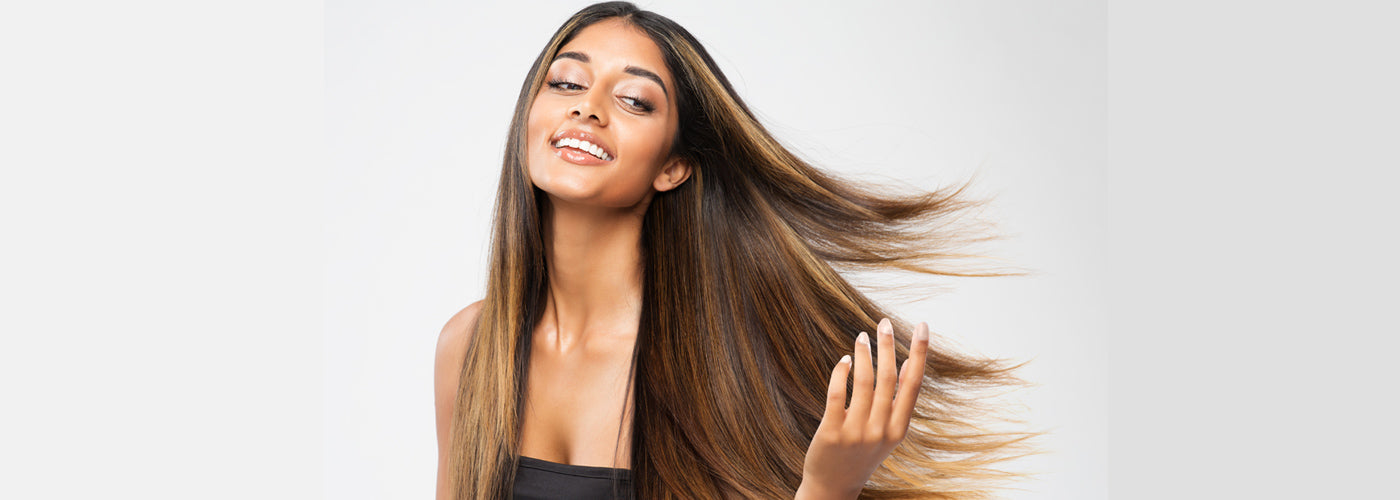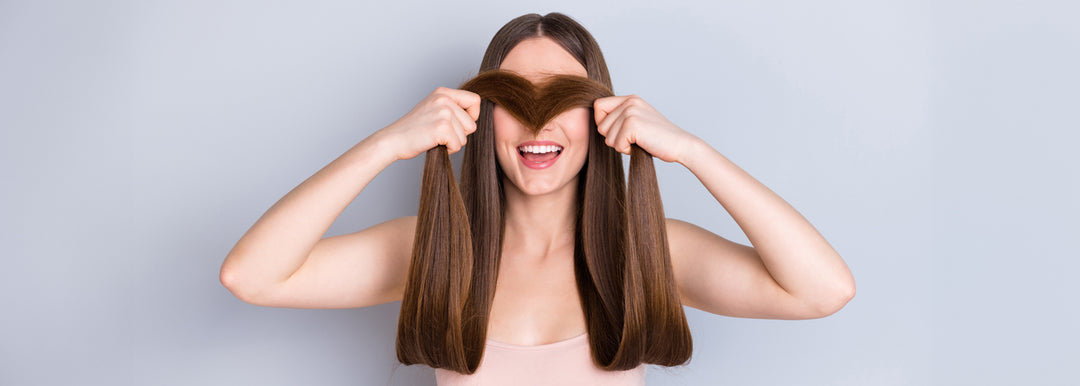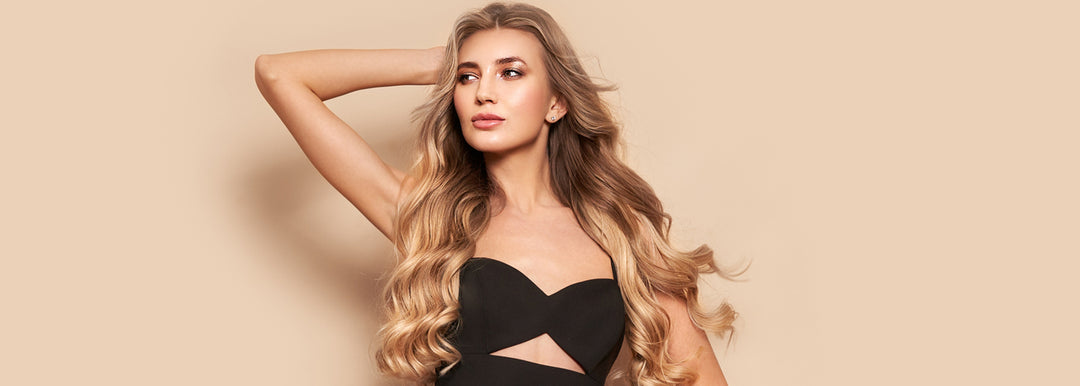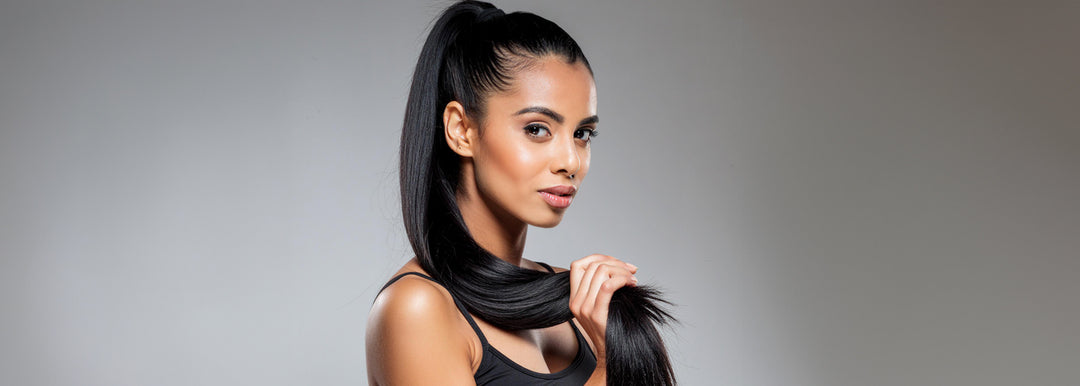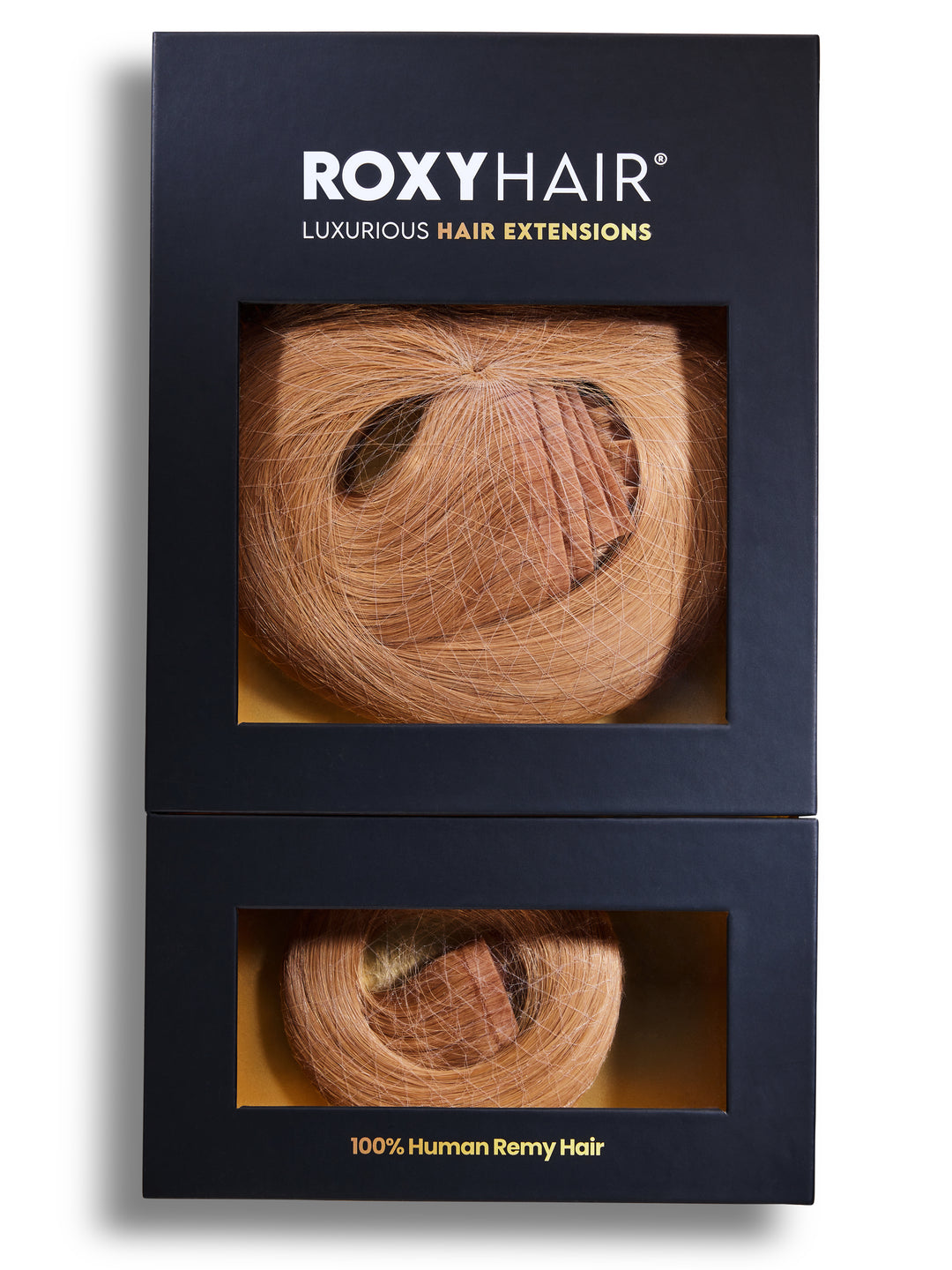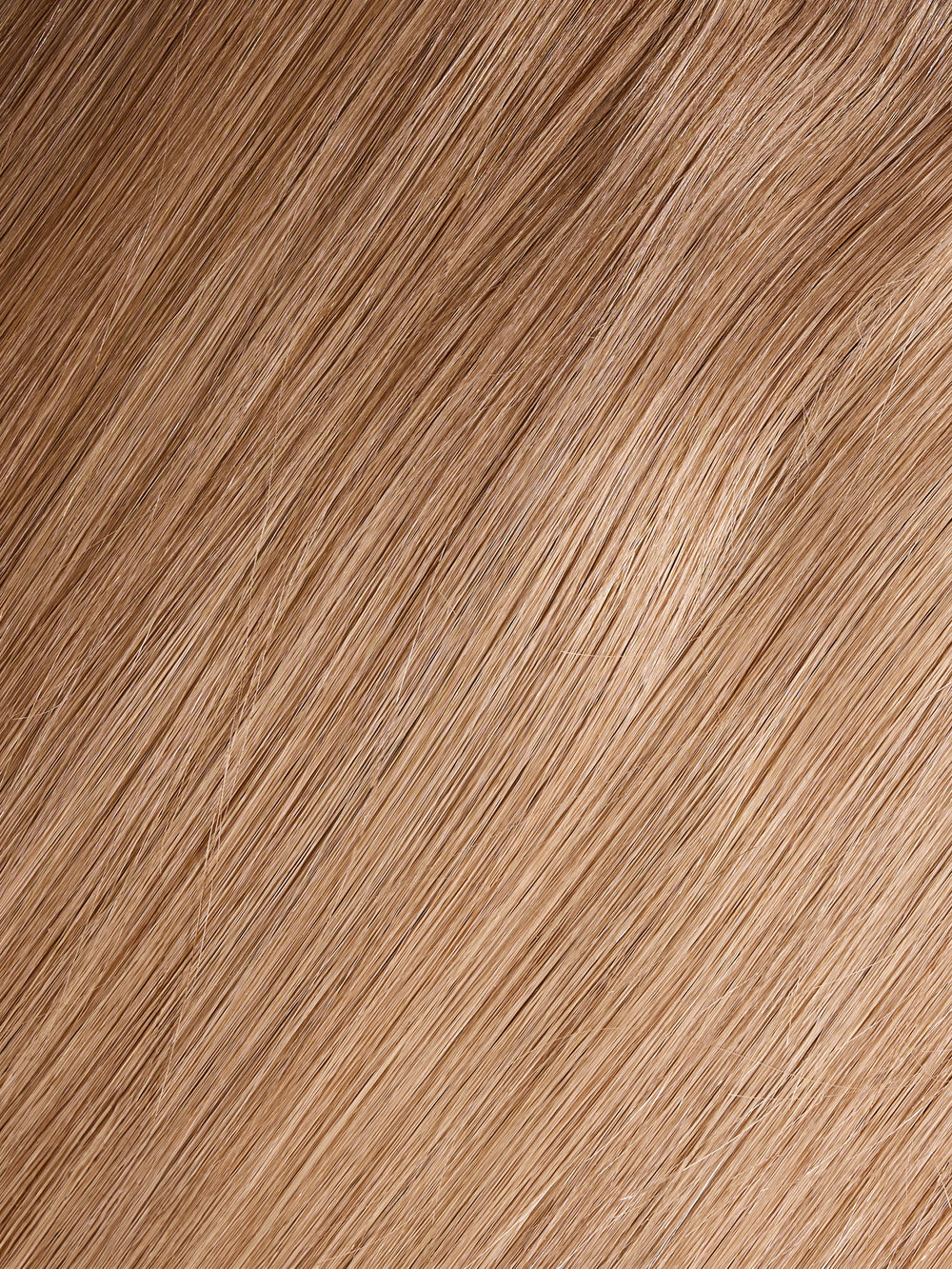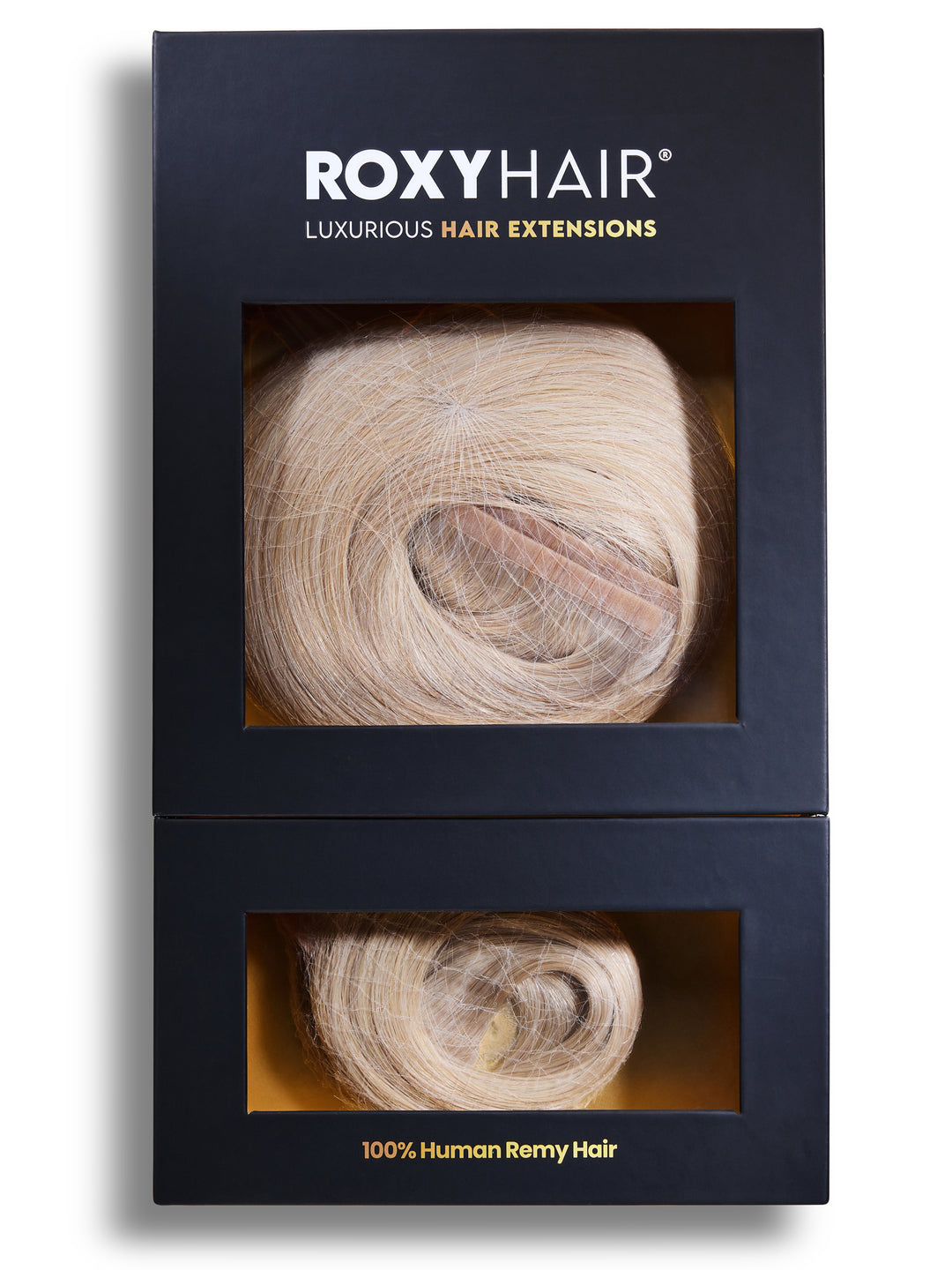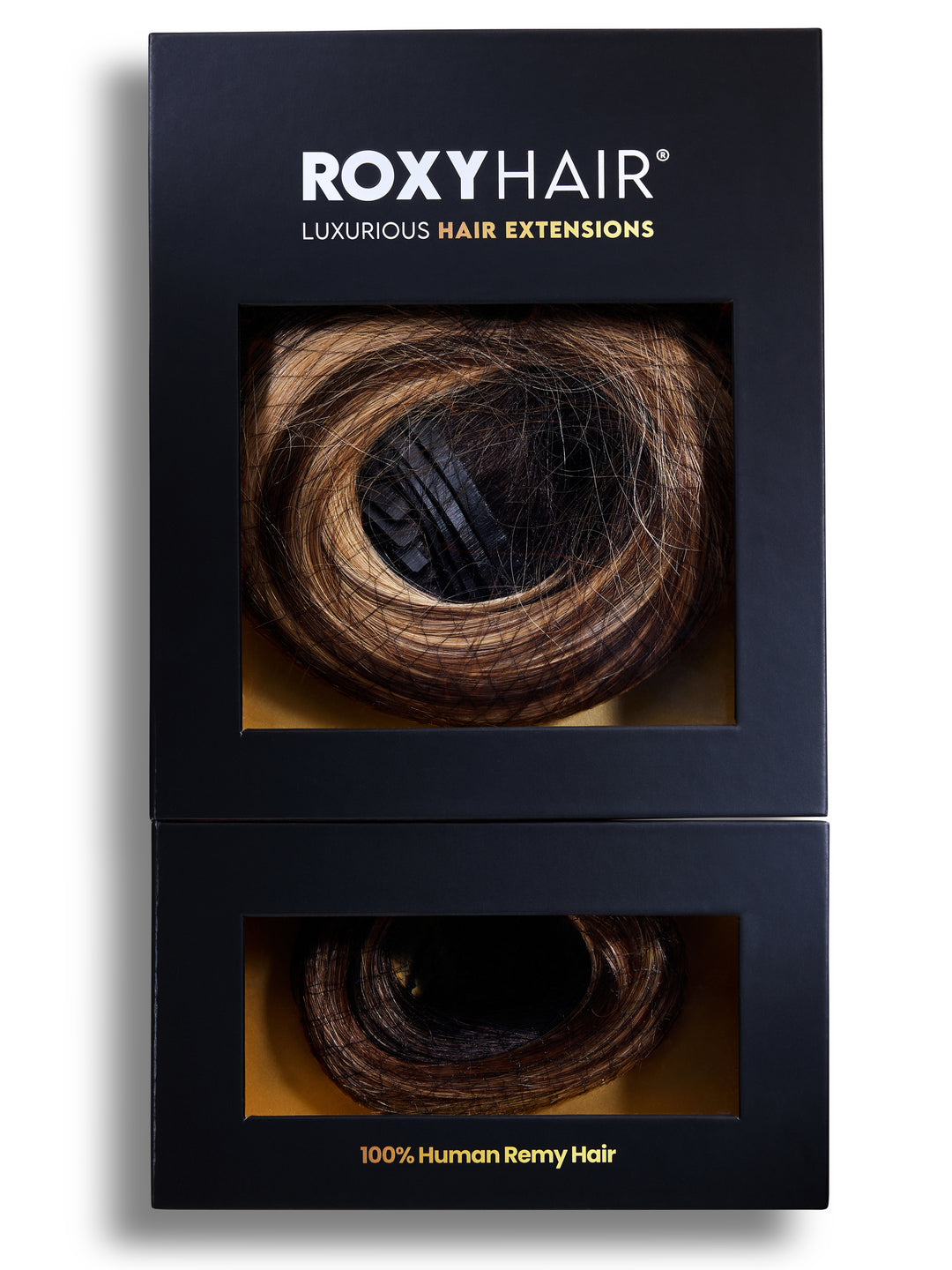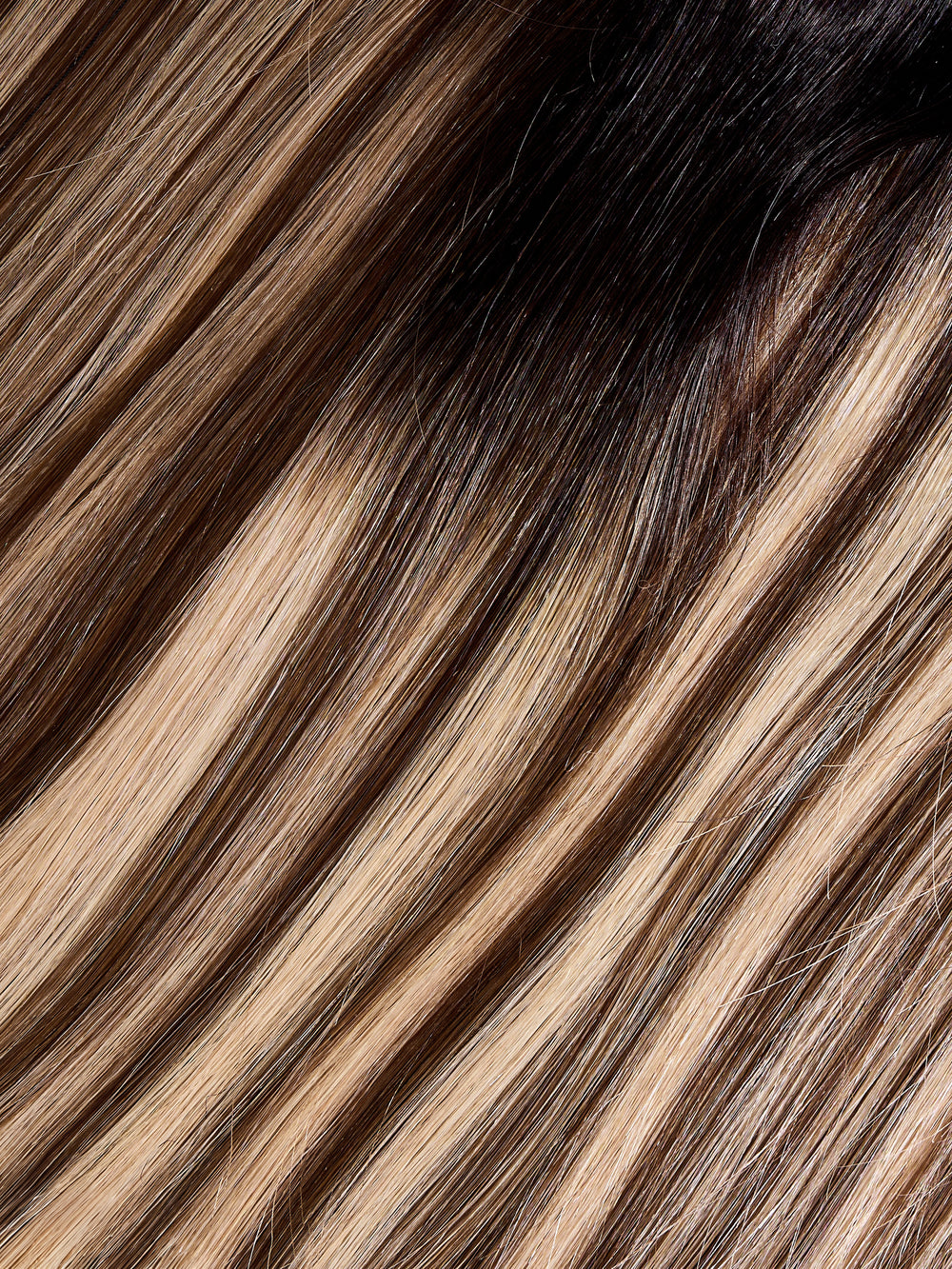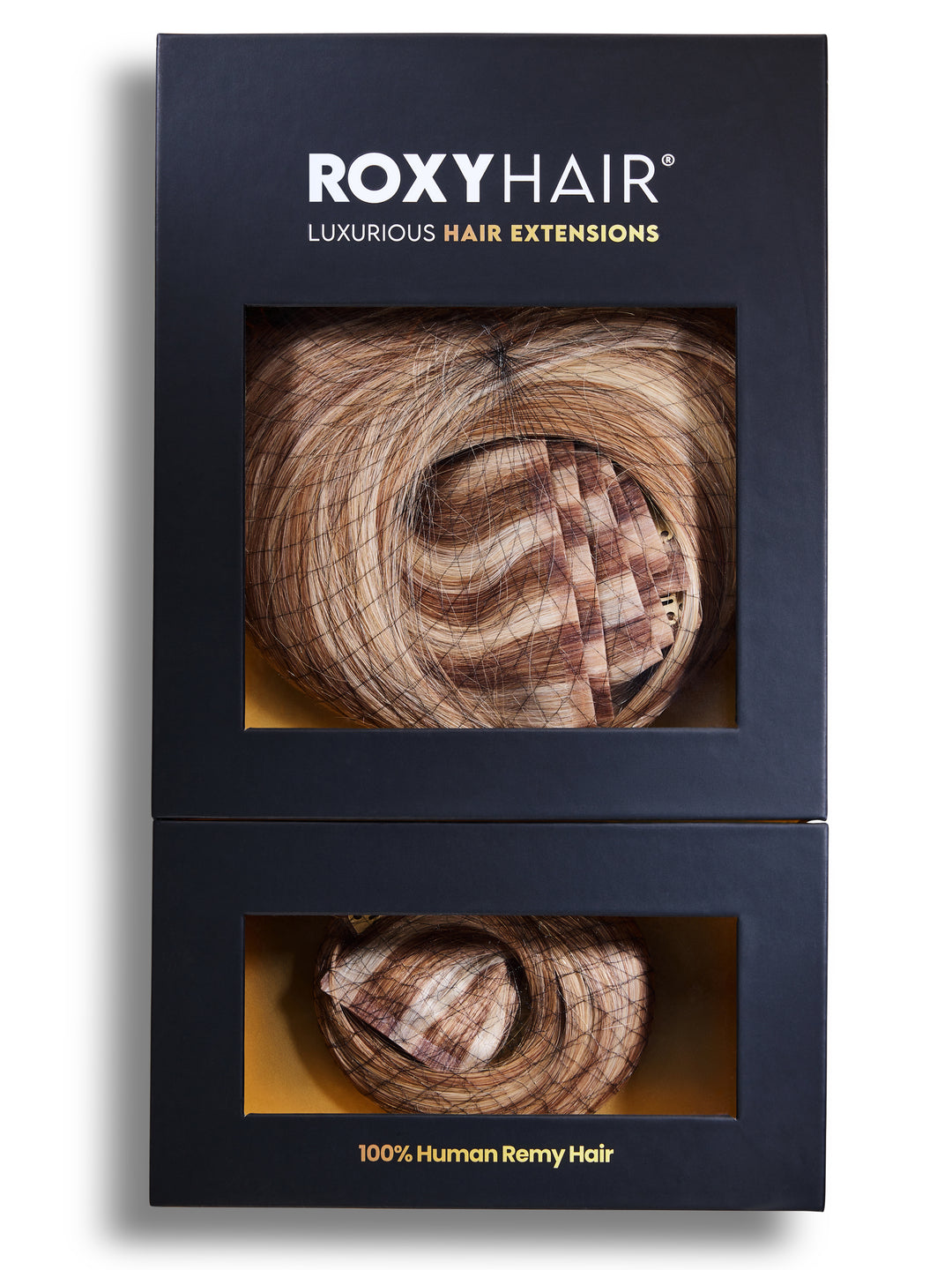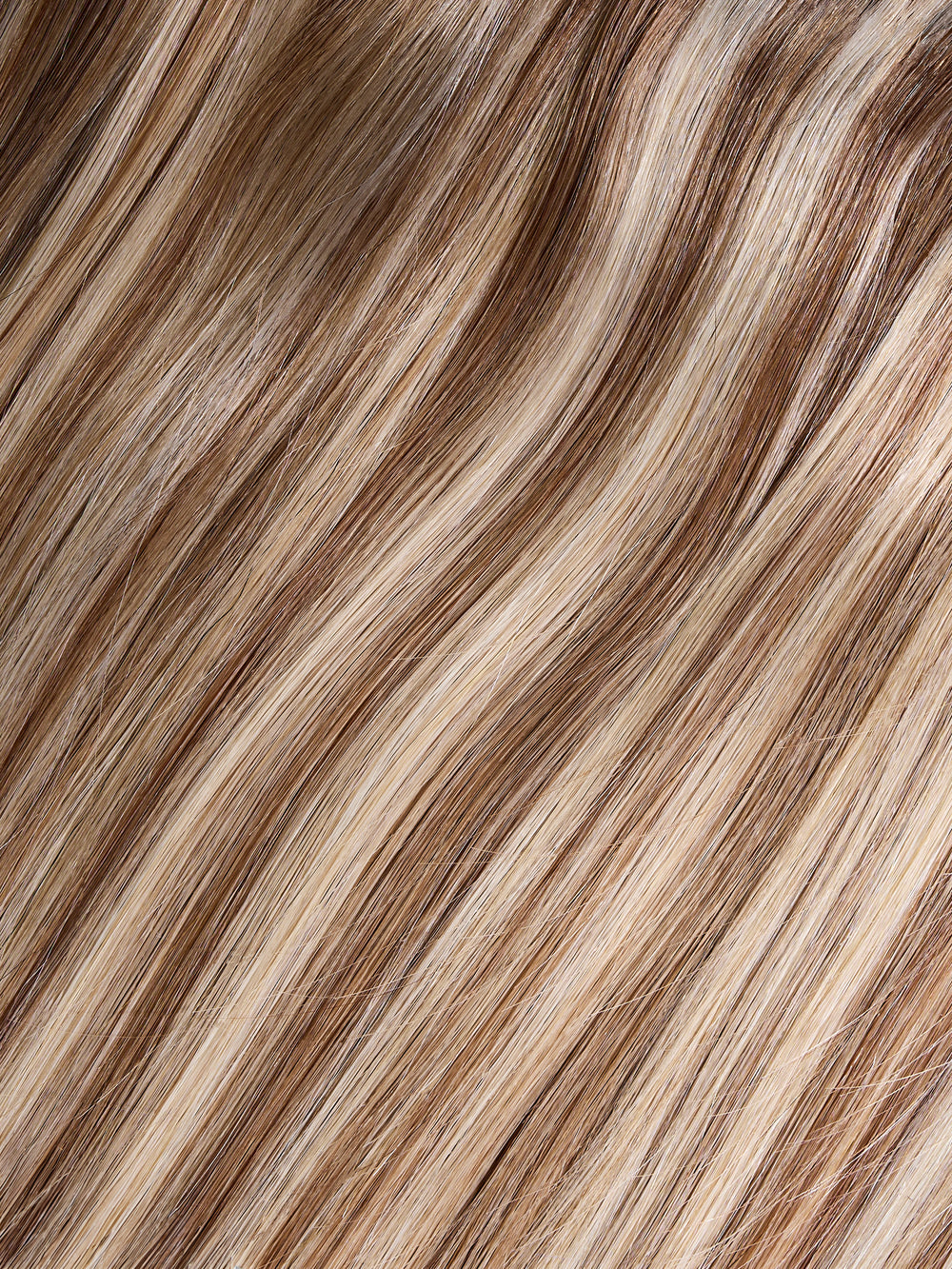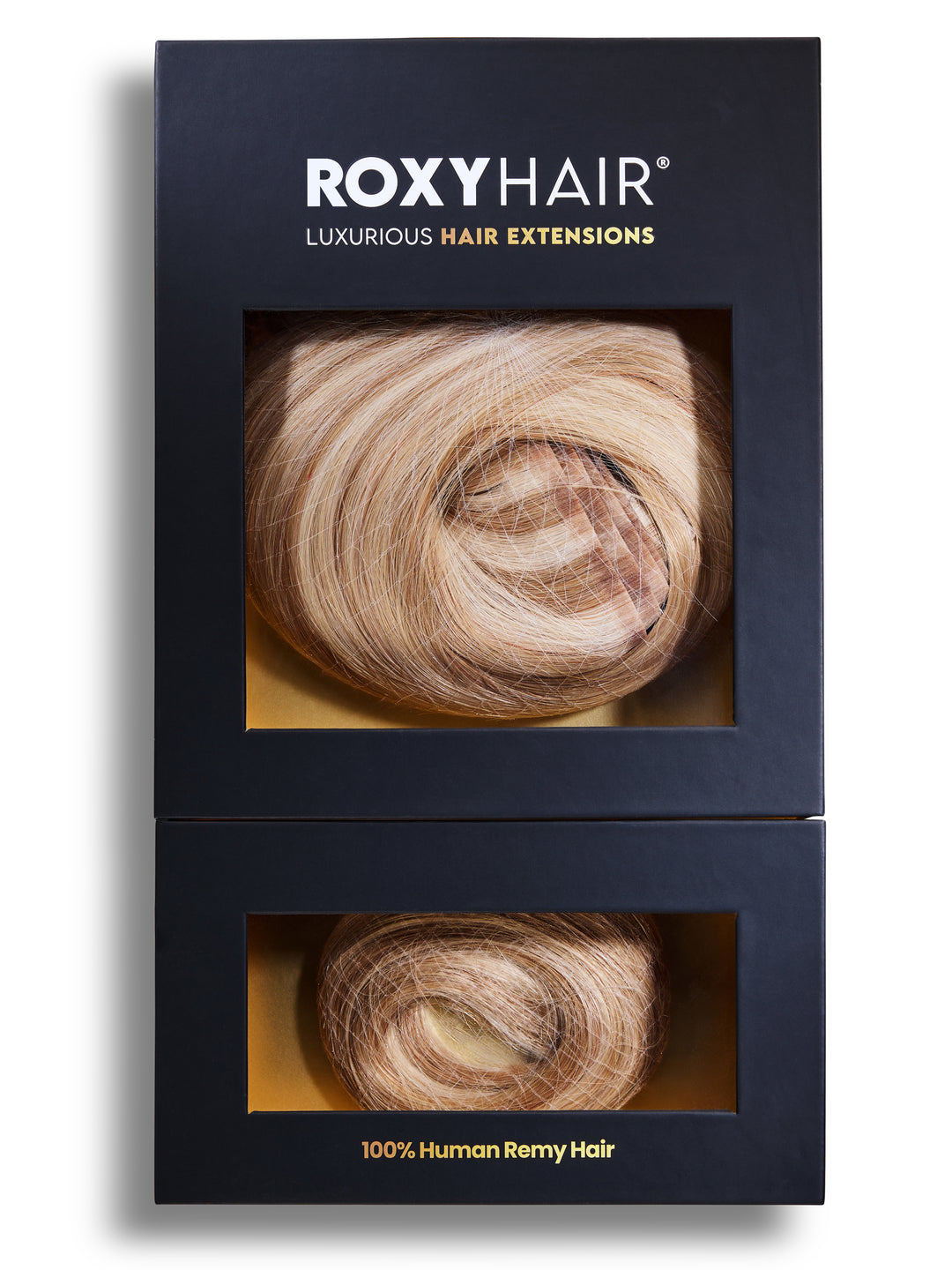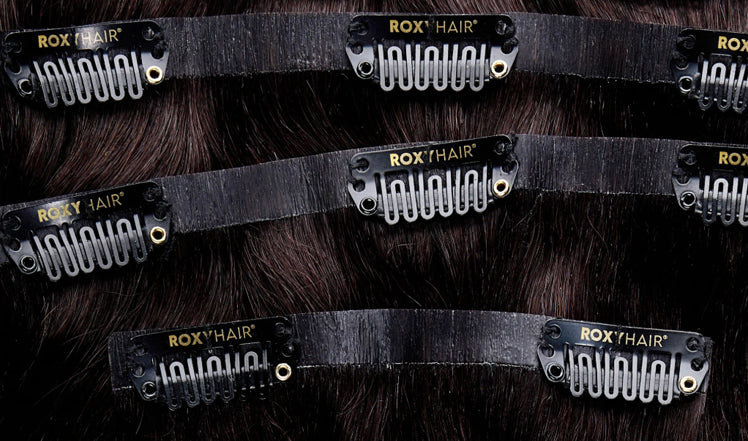Does your hair lack volume? Do you try to style it into a glamorous hairstyle only to find it falling wisps around your face the next minute? Clip-in hair extensions can help.
If you use hair extensions, you will want them to keep your hair looking voluminous for as long as possible. But how long do hair extensions last?
Clip-in hair extensions will last anywhere from 3 to 12 months. We understand that's a wide range. Factors like hair quality and hair care routine will affect their life span.
This article will explore these factors that play a role in how long hair extensions last. It will provide essential tips that ensure your hair extensions will last as long as possible.
Key Takeaways
- Hair extensions can last anywhere from a few months to a year or more. The longevity depends on the quality of the hair used in the extensions (Remy human hair vs synthetic hair), how often the extensions are used, and how they are maintained.
- You can extend the life of your hair extensions with proper maintenance. Avoid washing them too frequently. When you do wash them, use a mild, sulphate free shampoo. Condition the hair, and brush it gently to maintain optimal longevity.
- Choose Remy human hair extensions over synthetic hair extensions. Human hair extensions last longer and are easier to style and maintain.
Understanding the Lifespan of Clip in Hair Extensions

Hair extensions last anywhere from 3-6 months. But with exceptional care, they will last a year or more. The lifespan depends on the type of hair extension (real hair or synthetic), how frequently they are used, and how well they are maintained.
The type of hair extension also makes a difference. Clip in extensions typically last longer than sew in hair extensions, fusion hair extensions and pre bonded hair extensions. The more permanent solutions may be an easy option because you don't have to clip them in every time you want to wear them. But the ongoing wear means they will fizzle out sooner.
Here's a rundown of the various types of hair extensions so you can get a better idea of how long they will last.
- Clip in extensions: These hair extensions are typically worn for special occasions. With the proper maintenance, they can last a year or more. It depends on their quality and how often you wear them.
- Semi-Permanent hair extensions: Fairly permanent hair extensions like sew in hair extensions, pre bonded hair extensions, and fusion hair extensions are worn every day. They are exposed to environmental stressors, styling products, washings, and other factors that decrease their life span.
- Washing your hair extensions: Washing hair extensions can cause them to wear out sooner. Minimize hair washing if possible. If you do wash your extensions, avoid products with harsh chemicals. Use a mild shampoo.
Type of Hair and Longevity
The type of hair extension will affect longevity. The biggest consideration is whether to use natural hair or synthetic hair. Here are some factors to think about when you choose your type of hair extension.
- Price: Synthetic (artificial) hair is more affordable than natural hair.
- Styling: Synthetic hair can not be styled or washed. Natural hair will respond to styling products and washing just like human hair.
- Appearance: Synthetic hair may not look as authentic as natural hair. It may also get frizzy and tangled.
- Longevity: Natural hair extensions last longer than synthetic hair.
We've established that natural hair extensions last longer than synthetic hair extensions. But the type of hair you use also matters.
Remy hair extensions are recommended because it is a natural hair with high-quality natural hair. These semi-permanent or clip in extensions come with the cuticles intact ensuring the hair aligns in one direction. The hair is more natural-looking and less likely to tangle.
The color of the hair extensions matters too. Blonde hair extensions tend to be drier than darker shades. They will begin looking frizzy sooner and may need to be discarded sooner than brunette extensions.
Other factors that affect the longevity of hair extensions include:2
- Hair quality
- Maintenance routine
- Frequency of use
- Hair extension color
- Installation methods: clip in extensions vs semi-permanent hair extensions
- Natural hair or synthetic hair2
Frequency of Use and Care
When it comes to care, here are some tips to keep in mind.
- Avoid unnecessary hair washing. Limit washing to once every 7th week or every 15-20 wears or when you notice a build-up of styling products.
- Wash with a high-quality KERATIN shampoo and conditioner.
- Use deep conditioning products to keep the hair hydrated and minimize frizz.
- Brush the hair gently to reduce tangles and matting.
- Rinse hair extensions with cool water so they don't dry out.
- Handle extensions with care during washes
The Right Way to Maintain Your Clip Ins

Here are some other maintenance tips to consider:
- Never sleep with wet extensions: Hair is weakest when it's wet. If you sleep with wet extensions, they may become matted or tangled, or they may fall out completely. Untangling them requires pressure that they may not withstand. Invest in a quality hair dryer to ensure your natural hair extensions are dry when you go to bed.
- Separate Hair Bonds Each Day: Go through your hair extension with your fingers daily to ensure they aren't becoming tangled. This may sound like a tedious process, but the more often you do it, the easier it will be. Use a small comb or brush when necessary.
- Avoid Tangling During Sleep: Prevent your hair extensions from tangling while you sleep by tying them back loosely before you go to bed.
Cleaning and Conditioning Practices
Washing and conditioning your extensions is a must. Even though washing can damage your hair, it will reduce buildup. And conditioning will keep your extensions from looking frizzy and dry.
Wash your hair with a sulphate free shampoo like Pureology Hydrate Shampoo or Shea Moisture Raw Shea Retention Shampoo. They are free of harsh chemicals that can damage your extensions.
Next, use deep conditioning products to condition your extensions. Apply a mild conditioner to the ends of the hair only. Avoid applying conditioner near the clips.
After your hair is washed and conditioned, dry it thoroughly. Extensions are weak when they are wet. If you attempt to brush them, they could break or fall out and negatively affect how long hair extensions last.
You can only blow dry natural hair. If you blow dry synthetic hair, it will melt. Synthetic extensions must air dry or towel dry.
Styling Without Damage

Many people use heating tools to style their hair. While they are an effective way to curl or straighten extensions, they can do damage, especially if they are used too often. You can keep your hair protected by using heat styling tools on a low setting and coating your hair with a heat protectant spray. Here are some sprays that are recommended.
- HAIRUWEAR Restore spray
- Zala’s Revive Me spray
- Cantu Thermal Shield Heat Protectant
- TRESSEME Thermal Creations Heat Tamer Hair Spray
- MORROCANOIL Heat Protectant Spray
Using a protective spray will ensure your hair extensions last a long time.
Expert Tips for Daily Wear and Tear
If you plan to wear extensions every day, there are certain expert tips to keep in mind. They include:
- Don't Leave Your Hair in a Bun or Ponytail: It may be tempting to leave your hair in a bun or ponytail for days at a time. But these hairstyles can make pre bonded hair extensions tangle. Take your bun or ponytail out at the end of the day and brush it to maintain optimal condition.
- Be Careful About the Sunscreens You Use: You may be wondering, what does sunscreen have to do with hair extensions? Well, certain sunscreens can discolor extensions. Blonde extensions are most susceptible to discoloration. Avoid sunscreens with octocrylene and avobenzone to avoid discoloration.
Choosing the Right Hair Brush
People with hair extensions should brush their hair every day to avoid tangles. Choose the right brush for optimal results. Regular brushes can damage your extensions and reduce their life span, so use one that's designed to make extensions last.
Hair extension brush recommendations include:
Shop Roxy Hair
- Evercare Boar Bristle Brush
- Wicked Roots Hair Extension Wet Brush
- Acca Kappa Extension Brush
- Denman’s Tangle Tamer Ultra
These brushes are gentle on hair and distribute natural oils throughout the extensions. A wide-tooth comb can also help remove large tangles without causing breakage.
Avoid shedding when brushing your hair by placing your hand at the top of top of your tiny wefts or rows. Start brushing your hair at the bottom and work your way up to avoid unnecessary tugging.
Heat Styling and Protection

Heat exposure can dry out your hair extensions. It can also weaken the silicone bond that's attaching tiny wefts to your hair. You must use heat styling tools carefully.
Monitor the temperature of your heating tools ensuring they are between 250 and 350 degrees Fahrenheit (120 to 180 degrees Celsius. You should also use a heat protectant spray before you style your hair. Zala's Revive Me Spray is recommended.
When to Replace Your Clip Ins
You may love your clip in extensions. But there will come a time when you have to admit they have lived their best life and it's time to move on. Here are some essential tips that will tell you it's time for a fresher look.
- Dryness and frizziness
- Unmanageable tangling
- Brittleness
- Excessive shedding
- Broken and damaged clips
Customizing Clip Ins for Thicker Hair

People with thick hair may have difficulty finding clip in extensions that match their texture. Here are some most essential tips to follow to ensure your extensions look natural in your hair.
- Double-up wefts: Wefts are individual strands sewn into a duper thin cloth strip that's worked into your hair. If you double up on wefts, they will match your hair's thickness.
- Use a 4 Clip Weft: A 4-clip weft is four strips of hair sewn into one thick weft. Clip it into your hair to add length and volume.
- Attach Side Pieces: Side pieces will do even more to volumize your hair.
Thick hair may not hold clips well, but more clips with make the grip stronger. For best results, attach clips to the center of the hair. Then secure the outer clips to the side.
Your pre bonded extensions will make your hair look even thicker and more glamorous than usual.
Getting the Most Out of Your Investment
The proper care and maintenance will help you get the most value for your investment. Ensure your extensions last by storing them in a storage bag or on a hanger to prevent damage. Keep them out of direct sunlight to avoid discoloration. Gently detangle individual strands before you store your extensions.
Using mild shampoos for cleaning and moisturizing conditioners can also help maintain their quality. It’s also important to:
- Avoid sleeping with your extensions in
- Avoid products and tools that require heat
- Do not wash them with dry shampoo
- Handle your extensions gently when brushing
With the right care and maintenance, you can ensure your clip in hair extensions last as long as possible, so you get more value for your money.
Adapting Clip Ins for Special Occasions
Clip in hair extensions are ideal for styling. They can open opportunities for innovative styles that are perfect for special occasions. Here are a few styles you can try with clips ins and tape in hair extensions:
- French braid
- Low ponytail
- French braid
- Princess warrior
- Beach waves
- Half up half down
- Pinned back
- High ponytail
- Side braid
If you are invited to wedding, try incorporating micro link extensions into a Greek Goddess style. A side braid is perfect for a night on the town. I you simply want to add volume, apply 2-3 wefts to your natural roots. Natural hair braided is perfect for casual and formal events.
A combination of quality styling tools and creativity can help you achieve an upscale look for various fashionable events.
Time To Summerize
Clip in extensions are a fairly popular choice for anyone looking to add volume and length to their hair. The tips in this article will ensure your clips with stand the test of time.
To sum up, we recommend washing only when necessary. Use a mild shampoo. Follow up with deep conditioning products. Purchase high-quality real hair for best results. Brush often and separate individual strands to avoid tangling. Avoid styling or sleeping on your hair when it's wet.
By following these tips, you will ensure your hair extension lasts so you get the most bang for your buck.
Frequently Asked Questions
How long can you leave in clip-in hair extensions?
You can wear clip in hair extensions all day. However, they won't be comfortable to wear at night. With the proper care, they can last 3-6 months or longer.
Do clip-in extensions damage your hair?
Clip in extensions should not damage your hair. They have silicone clips that do not pull or tug. They are easy to wear and style.
How often should you replace clip-in hair extensions?
Most clip in hair extensions last three to six months. However, they can last longer depending on how often they are worn, their quality, and how well they are maintained. Store them in a safe place when they are not being used to avoid a shorter life span.
Can you sleep in clip on hair extensions?
We do not recommend sleeping with clip in hair extensions. They can damage your natural hair. They may also irritate your scalp. If you sleep with them occasionally, keep your hair protected.
What factors affect the lifespan of clip in hair extensions?
Several factors affect how long extensions last. They include maintenance processes, the quality of the extension, the frequency of use, the type of hair, and other crucial elements.




